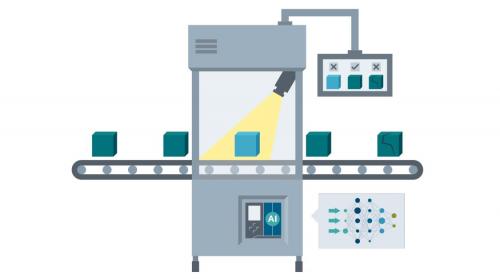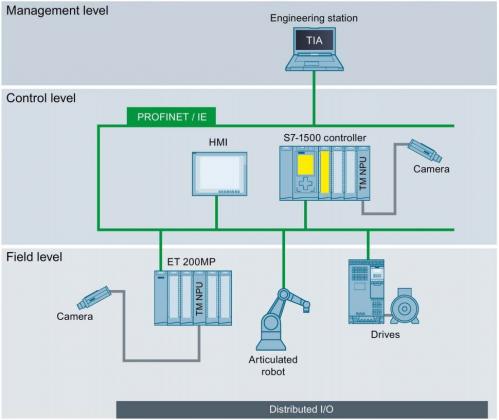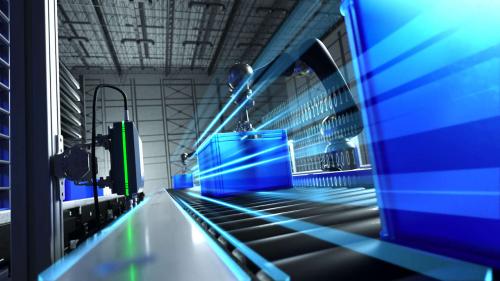Ever since IBM rolled out the world’s first mainframe computer in the 1950s, engineers and manufacturers in information technology (IT) have been pushing the boundaries of possibility through microelectronics and software. However, modern computer capabilities did not surface in the industrial operations technology (OT) space until recently, as machine builders began to realize the benefits IT can provide for efficiency and productivity.
A decade ago, digitalization and advanced analytics in OT environments gave adopters a leg up on their competitors. But today, manufacturers cannot keep up unless they lean on IT advances. These advances address challenges for plants, such as difficulty employing knowledgeable personnel, unexpected equipment failures and lack of operational insights for increasing efficiency.
Though many advances in IT have already found their way into OT deployments, artificial intelligence (AI) carries unrealized potential to aid machine builders in achieving profitability, maintaining efficiency and minimizing downtime. Although many know AI can assist in the production life cycle, it can be difficult determining where to start. This article describes benefits of AI-enabled edge devices by covering three areas where many machine builders can use them to improve their processes — predictive maintenance, quality assurance and robotics.
Data processing problems
In manufacturing, AI algorithms examine many iterations of a process, capturing its quantitative properties. Matched with example outcomes of pass and fail, the algorithms begin to correlate properties with their respective outcomes. Over time, AI can define and predict outcomes based on the quantitative properties captured during production more accurately (see Figure 1).
 Figure 1
Figure 1Some industrial AI solutions provide data processing capabilities in cloud-hosted servers, requiring plant sensors to transmit data to the cloud for analysis. Following analysis, cloud servers can send insights back to workstations on the plant floor so plant personnel can take appropriate action.
While developments in the Internet of Things (IoT) make direct communication between sensors and the cloud possible, direct connection usually is not advisable due to bandwidth constraints and security concerns. Hundreds of sensors on a plant floor simultaneously broadcasting their data for external consumption can clog up the network, creating bandwidth and latency issues. Even if data flows smoothly in both directions between plant floor and cloud, communication must be encrypted to ensure safe operation and protect-sensitive information.
Most modern plants require a PC-based solution to collect, store and interpret historical performance data for optimizing production. If all sensor data moves directly to the cloud, data aggregation takes place there, introducing more data integrity risk than if this task is done closer to the original source. Passing data to the cloud prior to analysis increases the time required between data collection and operational decision making.
AI-enabled edge devices enhance operations
To address these and other concerns, machine builders are implementing AI-enabled edge devices on the plant floor to provide data collection, insight generation and operational decision making. They also serve as primary arteries for data transmission between plant sensors and the cloud, where further data processing and deeper analysis can take place, for example to compare performance across a fleet of machines installed worldwide. Data transmission through edge devices enhances security because traffic is encrypted, and only necessary data leaves the confines of the plant.
These types of edge devices also speed up line production compared to cloud-based AI systems because they perform operational decision making at the plant itself (see Figure 2). Through AI predictive analysis, these edge devices learn to assess data to make decisions without task-specific programming rules. This learning can be applied to visual quality assurance, or to condition monitoring and equipment predictive maintenance alerting.
 Figure 2
Figure 2Both process and discrete manufacturing rely heavily on inspection to expose manufacturing defects, but manual inspection is costly and error-prone because it requires trained personnel. AI enables machine learning of visual quality assurance when introduced to production environments, as shown in the following examples.
Visual quality assurance for automotive welding
Requiring limited initial configuration, AI software can undergo a learning period to ascertain conditions constituting acceptable versus defective products, reducing the need for expert human resources. By linking a camera and sensor to an AI-enabled edge device, an automotive manufacturer was able to detect defective welds on car bodies without the need for human inspectors.
Improper welding can cause spots or splashes on a car body, and the AI image analysis software learned to identify these characteristics of poor welds. When a poor weld was detected, the edge device sent a signal to the production line programmable logic controller (PLC) to reject the car body, diverting it from the assembly line to a worker for remediation.
In addition to auto manufacturing, AI visual quality validation has potential for use in packaging, palletizing, material handling and material sorting applications to reduce errors. By using AI-enabled edge devices to identify defective components, machine builders can cut time-consuming and error-prone human inspection, while decreasing the need for complex programming routines to detect errors.
With AI-enabled edge devices, manufacturers create a neural network that collects data throughout the manufacturing process to identify quality defects earlier and more accurately compared to manual inspection.
Predictive maintenance and quality assurance for PCB manufacturing
Machine learning also can be applied for condition monitoring and predictive maintenance. To keep tabs on equipment health, edge devices can collect and analyze machine data, generating warnings preceding equipment failure by detecting anomalies.
By implementing AI and edge analytics, a manufacturer of printed circuit boards (PCBs) was recently able to optimize its production process. Prior to AI implementation, end-of-line X-ray testing was performed for quality assurance on each board, a time-consuming and costly process. By implementing a prediction model to calculate the likelihood of manufacturing defects, the factory was able to improve lead time and reduce the remedial costs of defects.
To achieve this, the factory configured sensors to examine boards — and to monitor manufacturing motor speeds, drive currents and spindle speeds — and create thousands of quantifiable data points along the production line for each PCB. Next, they deployed AI analytics software to identify correlations between particular properties and product defects.
The software was run on edge devices installed near the assembly line, reducing the time for data collection, analysis and operational decision making. By implementing this real-time analysis, the factory was able to reduce end-of-line testing by 30%, while simultaneously identifying critical equipment maintenance prior to failure, resulting in improved quality.
Beyond the plant, the AI-enabled edge devices transmitted equipment data to the cloud for further analysis. Through cloud apps, operators were able to view equipment health reports and receive failure prediction alerts, providing the ability to plan corrective downtime, and reducing total maintenance costs (see Figure 3). This AI predictive maintenance implementation greatly reduced unexpected equipment failure and corresponding downtime.
Robotics
In addition to predictive maintenance and quality assurance, AI is increasing the effectiveness of robots on the plant floor. Intelligent spatial assessment and smart object recognition enables robots to handle most objects without the need for complex customized algorithms or individual object programming. This enables production lines to scale up without introducing new programming procedures, and it empowers manufacturers to increase production while decreasing lead time without compromising quality.
Robots can work together with visual analysis AI to verify quality standards are met, and to improve their own movement intelligence over time. Robot AI application examples include:
- Robotic arms with mounted cameras verifying products are free of defects
- Autonomous guided vehicles in warehouses calculating and learning the most efficient routes for material handling
- Self-driving cars identifying and avoiding road hazards and obstacles
- Picking and packing robots optimizing product placement orientation (see Figure 4).

Figure 4
While many robots still require operators or programmers to provide explicit instructions, AI is becoming more prevalent, as shown in the aforementioned examples. As this trend continues, robots will continue to carry out difficult, dangerous or demanding tasks otherwise executed by humans, freeing up skilled personnel to focus on innovative process improvements.
AI for future operational improvements
With machines becoming more intelligent as OT devices increasingly provide IT functionality, potential advantages for machine builders are significant. AI in plant environments can simplify configuration and programming, provide advance notice for equipment maintenance and reduce required human operational intervention.
By implementing AI-enabled edge devices on the plant floor, machine builders can gain:
- Central access to data and insights
- Improved autonomous operational decision making
- Integrated operational and business process workflows
- Production throughput increases.
Manufacturers and machine builders have benefited from advances in machine visualization and automation over the past decade. But as IT/OT convergence continues, AI will be a dominant factor driving further improvements in operational efficiency.



